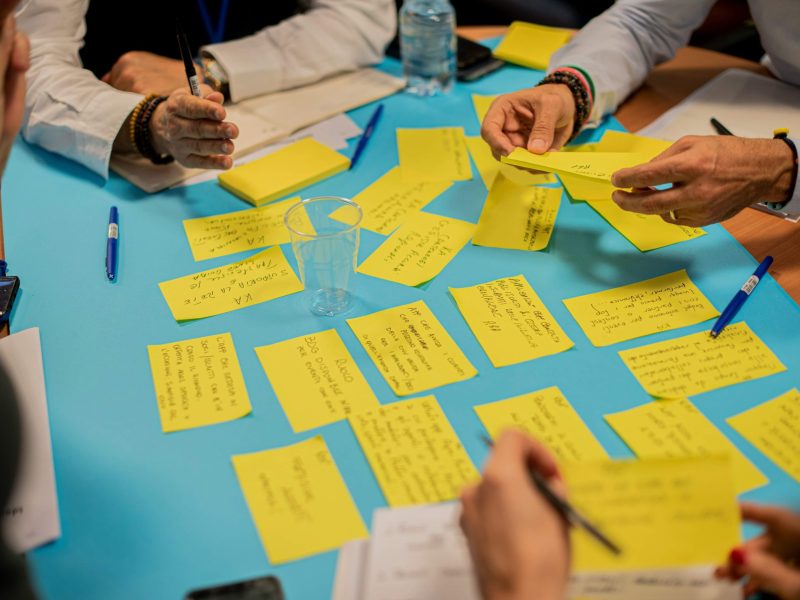Uniting Rigor and Creativity for Organizational Success
Introduction: The Strategic Imperative in a Complex World
In an era of rapid technological change, economic uncertainty, and shifting consumer expectations, traditional strategic planning often falls short. Leaders face a paradox: they must balance analytical rigor with creative experimentation to navigate ambiguity. Enter Design Thinking for Strategy—a human-centered approach that bridges the gap between data-driven decision-making and imaginative problem-solving.
This post unpacks a proven framework to design strategies that are both actionable and visionary. Drawing from methodologies like IDEO’s Human-Centered Design and Roger Martin’s Playing to Win, we’ll explore how to turn strategic challenges into opportunities for innovation.
Part 1: How to Identify and Frame Strategic Problems
Step 1: Diagnose the Core Challenge
Strategy begins with clarity. Start by asking: What is the critical problem holding us back? Use tools like the Five Whys to dig deeper:
- Why is our market share declining?
- Why are customers switching to competitors?
- Why is our product experience lagging?
Example: When Adobe shifted from boxed software to cloud subscriptions, they reframed their challenge from “How do we sell more licenses?” to “How might we empower creatives to collaborate seamlessly?” (Source: Harvard Business Review, 2013).
Step 2: Frame as a “How Might We” Question
Transform problems into opportunities. For instance:
- How might we double customer retention in 12 months?
- How might we enter the sustainability market without cannibalizing existing revenue?
This technique, popularized by IDEO, encourages divergent thinking (IDEO U).
Step 3: Brainstorm Possibilities
Use SCAMPER (Substitute, Combine, Adapt, Modify, Put to another use, Eliminate, Reverse) to generate ideas. For example, Airbnb’s “Experiences” feature combined travel lodging with local tourism—a radical pivot from their core offering (Fast Company, 2016).
Part 2: Surface Winning Conditions
Step 1: Map the “Logic of Success”
Every strategy rests on assumptions. Use a Strategy Canvas (from Blue Ocean Strategy) to visualize key factors your strategy depends on. For example, Tesla’s success hinged on:
- Battery cost reduction
- Charging infrastructure
- Regulatory incentives for EVs
Validate these conditions with tools like Pre-Mortem Analysis: Imagine your strategy failed—what went wrong? (Harvard Business Review, 2007).
Step 2: Prioritize with the “Must-Have, Should-Have, Could-Have” Framework
Example: A fintech startup targeting Gen Z might prioritize:
- Must-Have: Mobile-first UX
- Should-Have: AI-driven financial coaching
- Could-Have: Gamified savings features
Part 3: Test Strategically with Prototypes
Step 1: Build Low-Fidelity Prototypes
Test assumptions cheaply and quickly. For example:
- Concierge MVP: Manual service mimicking a tech product (e.g., Zappos’ founder testing shoe sales via a basic website).
- Wizard of Oz Prototype: Fake the backend (e.g., Dropbox’s video demo validating demand pre-launch).
Step 2: Run Strategic Experiments
- A/B Testing: Compare landing pages for a new product line.
- Pilot Programs: Launch in a controlled market (e.g., Starbucks testing cashierless stores in Seattle).
For guidance, see The Lean Startup by Eric Ries (Lean Startup).
Part 4: Enable Action Through Alignment
Step 1: Create a Strategic Roadmap
Use OKRs (Objectives and Key Results) to align teams. Google’s classic example:
- Objective: Dominate the mobile search market.
- Key Result: Achieve 90% Android OS integration by Q4.
Step 2: Foster a Culture of Strategic Agility
Encourage “small bets” and rapid iteration. Amazon’s “Two-Pizza Teams” (small, autonomous groups) exemplify this (Amazon Leadership Principles).
Key Skills for Strategic Designers
- Business Strategy: Master frameworks like Porter’s Five Forces and SWOT Analysis. Learn from resources like Coursera’s Business Strategy Specialization.
- Prototyping: Build mockups with tools like Figma or Miro. Explore Stanford d.school’s Prototyping Resources.
- Innovation: Study systems like Design Sprints (Jake Knapp) and Jobs to Be Done (Clayton Christensen).
Conclusion: Strategy as a Living Process
Designing strategy isn’t a one-time event—it’s a cycle of learning, adapting, and evolving. By blending analytical tools with creative methods, leaders can build strategies resilient enough for today’s volatility and visionary enough for tomorrow’s opportunities.
Call to Action: Start your next strategic session with a “How Might We” question. Then prototype, test, and iterate. The future belongs to those who design it.
References & Further Reading
- IDEO’s Design Thinking for Strategy
- Roger Martin’s Playing to Win
- Nielsen Norman Group on Prototyping
- McKinsey on Strategic Agility
The image belongs to Sweet Life on Unsplash


